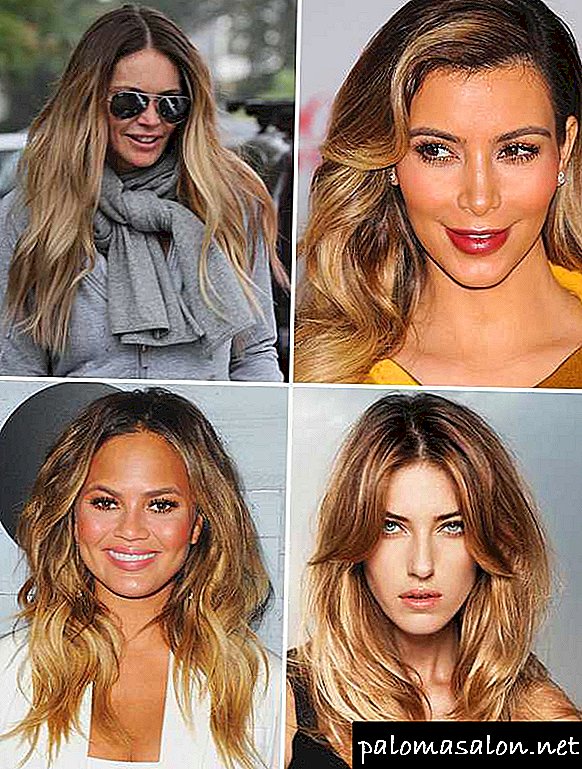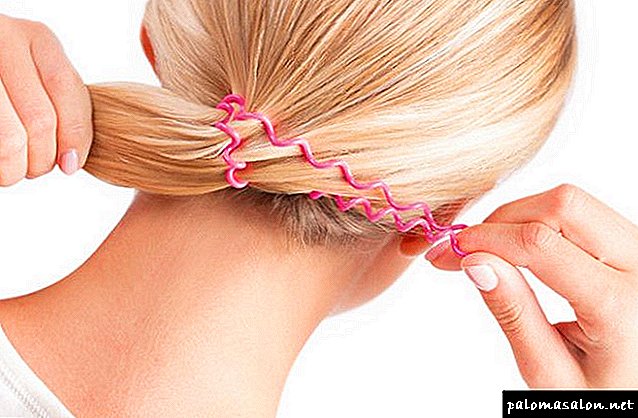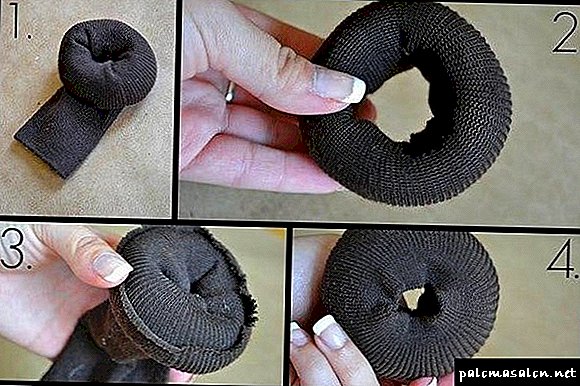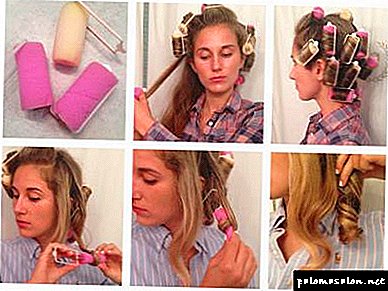How often can and should dye hair paint? What determines the length of the period between staining?

Regular dyeing or lightening of hair can very severely affect the condition of your hair, since both of these procedures are a potential danger, it is important to know and follow some rules, including the frequency with which you can dye your hair.
The length of the period between the repeated use of dye depends on the type and condition of the hair, so we divided the recommendations according to this principle.
How often do I need to dye gray hair
The most demanding will be gray hair, when the percentage of gray hair is 30% of the total weight of the hair. Gray, regrown hairs are very conspicuous, and partings with gray roots look like balding hairs, especially on hair painted in dark shades.

To look neat, you can not allow the regrowth of gray hair, so that it becomes noticeable, which means you need to tint the roots on gray hair at least once every three weeks. With such frequent use of dye, apply it only on the regrown part, so as not to cause additional damage to those parts of the hair that have already been painted earlier.
How often do I need to dye dark hair
If you use a tone-on-tone dye for natural dark hair, then you should have no problems with re-dyeing, especially if you used a semi-permanent dye that very gently comes off the hair, and the border between dyed and natural is not noticeable. Repeated staining to update the color in this case should be done when the hair has become dull, and this happens after about 4 weeks. It is possible not to do the following coloring at all, and if you don’t like the transition boundary and hair dullness, then tint agents will come to the rescue, they will slightly toned the previously painted and regrown natural hair.
In the case when you lighten dark hair, dark regrown roots will be noticeable as quickly as in the situation with gray hair. But here you have two options - repeat the dyeing (lightening) every three weeks, or leave the dark roots as they are, and with the help of dark dye perform the dyeing using the contouring technique, darkening some of the curls. This will allow you to emphasize the shape of the face, and not lighten the regrown roots as much time as you want. With further growth of dark roots, make the transition from natural dark to brightened light more smooth using techniques like obmre, shatush or balajazh.

How often do I need to dye blonde hair
When you choose dark shades for light hair, you should not use permanent dyes. Dark pigment will fall perfectly on a natural light base and without deep penetration inside the hair. And go dye in this case will be much softer and more inconspicuous. If you want to maintain the chosen dark color for natural blond hair, then you need to tint light roots once every three weeks, except for the roots at the end of dyeing, you need to stretch the dye along the entire length in order to update the washed off shade. The periods between paint stains can be extended using shading agent that toned both the colored length and the light roots.
The use of light shades of paint on blond hair will not require you to frequently re-dye. The pigment will be gradually washed out, and the paint can be reused once every 4-6 weeks. And if you do not want to re-dye your hair with paint, but at the same time you can see the difference in dyed and regrown hair on your hair, you can hide it with a tonic tonic of today's strawberry shade. Color them with the lower part of the previously painted hair, or vice versa - natural regrown hair at the roots.

In addition to the original hair tone and dye color, the frequency of dyeing depends on their structure - sprung roots on straight hair are more noticeable than on curly hair, since 1 cm of curly hair looks much shorter.
If you want to dye your hair regularly and at the same time try to do less harm to them, choose a dye to match the tone or 2-3 tones different from the natural. For coloring in tone choose tint agents and direct dyes.
Choose all dyes from professional cosmetics in order to choose the right shade and oxidizer of the desired concentration, rather than the one that is offered to you in a regular box with paint. Correctly selected shade and high-quality dye will not push you to re-staining to correct the color you didn’t like from the previous one.
Resistant (ammonia)
They contain ammonia and hydrogen peroxide. Ammonia loosens the cuticles and the coloring matter penetrates deep into the hair. The result of staining is persistent and lasts up to 4 months. Dyeing hair is recommended a maximum of 1 time in 4 weeks.
Cons: ammonia increases fragility, destroys the structure of the hair, affects the formation of split ends, can cause dermatitis. Peroxide is aggressive: can cause burns to the scalp, provoke hair loss.

Semi-resistant (ammonia-free)
Semi-resistant paints do not contain ammonia, but they contain peroxide and other harmful chemicals (parabens, methyltoluene). "Cocktail" turns out to be more benign than in ammonia analogues. Coloring pigment creates a shell without penetrating deep into the hair.
Manufacturers often add plant extracts, oils, and waxes to these products that retain moisture. It is possible to renew the color with the help of such paints once in 4-5 weeks.
Cons: color is washed off in 3-5 weeks. You can lighten up to two tones.
Shading
Balsams, shampoos, tonics are in the arsenal of coloring agents. They do not contain hydrogen peroxide or contain a minimum amount of it. The tone is washed off after 7-8 times. In the bottle, in addition to the coloring component, may contain air conditioning.
Despite the mild effect, it is not recommended to use tint agents more often than 1 time in 10 days.
Cons: if among the ingredients is hydrogen peroxide, then with frequent staining this component slowly accumulates, drying the curls. After the chemical perforation and clarification, it is necessary to wait at least two weeks, otherwise the tonic will fall unevenly.

Natural dyes include henna and basma - powders from dried plants. The coloring effect of these funds is maintained for 3-4 months.
These natural dyes have a healing effect (dandruff and inflammation of the scalp disappear). Despite such an organic “bouquet”, it is not necessary to dye the hair more often than once every 4 weeks, as due to tannins the curls can become hard and dull.
Cons: Fix a bad result using chemical dyes will not work. In addition, synthetic substances can cause an unexpected reaction, for example, pink or green shades, so it is safer to return to ammonia and ammonia-free means when natural pigments are washed out.
Bleaching
Regardless of whether you use supra or lightening paint, it is recommended to use them no more than once every 6-8 weeks. During this time, the roots will grow and after that it will be easier to update the color. Try not to treat previously clarified areas, as they are already damaged by the previous procedure.

Coloring in a lighter shade
Due to the aggressive effect of ammonia paints, it is better to apply them only on regrown roots, and to apply non-ammonium compounds to previously painted hair. Or use the same paint as on the roots, only apply it on the entire length for 5 minutes before washing the dye from the roots. The minimum interval between clarifying procedures is 1 time per month.
Coloring
Multitonal coloring can be refreshed after 6-8 weeks, so any means can be used for this (supra, resistant, semi-permanent, brightening paints). The spacing is quite long due to the fact that the dye makes hair hard and dry. In addition, the contrast between the previously painted and growing strands during coloring becomes noticeable late.
You can correct this staining in a month. To do this, you can use any of the above means of chemical and organic origin. But for long-term use it is still better to stay on ammonia-free means or henna and basme. But natural dyes will not work if we are talking about gray hair. Henna and Basma do not paint it evenly.
Darker color
After three weeks, regrown roots will begin to appear. This is especially noticeable if the hair is gray. Use resistant or semi-resistant paint over this period of time only on the roots. Over the entire length, the hair is stained once every 2-3 months, more frequent procedures will weaken them.
Bright color . Tonics and special coloring shampoos can be used no more than 1 time in 2-3 weeks. Stable means 1 time in 4 weeks, half-resistant - in 3, henna and basma - in 4. Such an interval allows you to save an optimal gentle mode for the hair and in time to refresh the appearance.
How to avoid frequent staining
 Use a special series of shampoos and grooming products for colored hair.
Use a special series of shampoos and grooming products for colored hair.- Regularly use moisturizing conditioners and sprays.
- Avoid water with bleach; put a hat on in pools.
- Wash your hair 2-3 times a week.
- Try multitonal methods of coloring with a long period of correction: highlighting, coloring, shatush, ombre, brondirovanie.
It is harmful to dye hair by any existing means. To reduce the negative effect, it is enough to know how different tools “work” and how often it is necessary to adjust the appearance with different methods of painting. This will allow to withstand the minimum required period of time for which the curls will have time to recover.
Ammonia-free dyeing: how often can you dye your hair?
 Ammonia-free dyes are considered to be gentle to hair, and coloring pigments “envelop” them, adding the necessary tonality. Despite this, it is important to know how often you can dye your hair with such products. The stability of such compositions is much lower, and therefore approximately in a month the paint will completely wash off, and the color of the curls will become dull. In this regard, the staining procedure will have to be repeated monthly.
Ammonia-free dyes are considered to be gentle to hair, and coloring pigments “envelop” them, adding the necessary tonality. Despite this, it is important to know how often you can dye your hair with such products. The stability of such compositions is much lower, and therefore approximately in a month the paint will completely wash off, and the color of the curls will become dull. In this regard, the staining procedure will have to be repeated monthly.
Coloring curls even sparing means should be carried out no more than the first time per month. It is also important to note here that we are talking about paints for home use. In the situation when it is impossible to achieve the desired hair color in one procedure of dyeing, only stylists who dye hair in salon conditions will help. Most often, hair dyeing professionals use special caring dye products, which gently affect the curls, almost without damaging them. At the expense of skills and abilities, stylists conduct hair dyeing procedures in the salon often, up to several times in one visit.
Hair dyeing with even light paint can be carried out no more than once a month.
How often to dye hair tint shampoo or balm?
 Tint compositions are not able to drastically change the existing tone of the hair, but they can add the desired shade. Today, the shop windows have a variety of tonics, shampoos, balsams and conditioners that contribute to changing the color of the curls, but how often you need to dye your hair with such blends is not known to every woman.
Tint compositions are not able to drastically change the existing tone of the hair, but they can add the desired shade. Today, the shop windows have a variety of tonics, shampoos, balsams and conditioners that contribute to changing the color of the curls, but how often you need to dye your hair with such blends is not known to every woman.
Tint formulations are not as safe. Although in small quantities, hydrogen peroxide and ammonia are present in them, and therefore the use of such products more often than once every 2 weeks can cause as much damage to hair as ordinary resistant paint. In addition, you should not forget about some of the nuances that are associated with the use of tint, and how often you need to dye your hair:
- such compositions will not work when painting gray hair, because, on the contrary, they can aggravate the situation, making gray hair more noticeable,
- the application of tint to curls that were previously painted with henna is prohibited, because in this situation there is a chance of getting a completely unexpected tone.
Shading agents in the composition have much less harmful substances than dyes for hair dye, in connection with which many ladies believe that the damage to curls from them is minimal, but it is not.
The use of natural products for dyeing: how often should the application be?
 Henna and Basma mixed in different proportions depending on the desired color. Staining with clean Basma will add a greenish tint to the curls, and therefore it is not used separately. As in the situation with tinting agents, natural dyes should not be used when painting gray hair, and in other cases their use will only be useful.
Henna and Basma mixed in different proportions depending on the desired color. Staining with clean Basma will add a greenish tint to the curls, and therefore it is not used separately. As in the situation with tinting agents, natural dyes should not be used when painting gray hair, and in other cases their use will only be useful.
There are no harmful chemicals in these products, so they can be used not only for safe dyeing, but also for treating hair. Due to the natural components of basma and henna will contribute to strengthening the roots of curls, relieve dandruff, accelerate hair growth.
In addition to chemical compositions for coloring strands, there are also paints of natural origin, for example, henna and basma.
How often to dye your hair with basma and henna
Henna and Basma are natural dyes. They will give a beautiful and brilliant shade to hair, and also take care of their health. But here there is an important remark, it is impossible to paint with basma separately in any case. Otherwise, the hair will be, without exaggeration, green. Therefore, basma should be mixed with henna.
Basma helps hair grow faster, strengthens its roots, and also rather effectively fights dandruff. The proportions of basma and henna should depend on the planned shade of the hair. For example, if you mix the powders in a one-to-one ratio, you can get chestnut hair color. And if you put Basma two times more than henna, the hair will be painted black. If you want to get a bronze color, then you need to take henna two times more than the Basma. But how often can you use these natural products for hair coloring?
How to dye hair in salons
In the salon at the professionals hair can be painted quite often. Experts know what colors and in what proportions you need to mix to get the desired shade. You may have to touch up even twice to get the desired color. For example, if your natural color is light and you dream of a dark brown, then you will have to sit in the barber’s chair several times.
If the blonde immediately repaint with brown paint, then her hair will turn gray. That is why, you should first paint the hair in a red shade. And after the color is fixed, you need to dry your head to see if you have reached the right shade. After all, wet hair is much darker than dry.
Ammonia free hair colors
Ammonia-free paints are considered a more benign option - they not only do not contain caustic ammonia, but also contain very little hydrogen peroxide. The brightness of the shade is the same as that of the persistent. That's just the color on the curls will not stay very long.
Choosing this option, be ready that in a month and a half (or even earlier), the color will fade and come down. This paint is most often chosen by those girls who do not plan to change their hair color drastically, but simply strive to give more brightness to the image.
Resistant
The very name of the paint speaks for itself - it really allows you to keep color for a long time.Among the ingredients are ammonia and a large amount of hydrogen peroxide. This is the price paid for the duration of the effect. The effect of such colors is appropriate: they are really resistant, but also very aggressive for your hair.
The best is re-staining after 2 months. What to do in between staining? To nourish the strands and use the tonic tonics.
Natural dyes
Have you heard about basma and henna? These are natural products for giving the hair a bright shade without harm, if used wisely. It is advisable to paint the entire length once in two months, and you can tint the roots as needed.
Basma is used by mixing with henna, as in the pure version it can give a green color. When mixing these paints, you can vary the desired shade. But be careful: if you have dyed hair, you can not use henna. Color may be completely unexpected.
Salon and home coloring: is there a difference?
Most often paints for home use and salon are very different. Those that are designed for use at home, not only have a brighter packaging design, designed to attract customers, but also more aggressive substances in their composition.
Salon paints are designed for professional use. To achieve the desired shade, the masters mix colors of several tones in a certain proportion. Salon dyeing can be repeated more often than home. Besides, it is much safer for a stylist to dye hair for hair too - you definitely will not overdo the paint and get exactly the shade you wanted.
Coloring technique matters
Technique staining also affects the frequency of procedures. There are several fashionable ways to update the shade of hair, which allow you to paint less often.
Beautiful and very effective coloring is achieved by a combination of several natural shades. “Burnt in the sun” strands are not only fashionable and beautiful, but also the opportunity to use painting compositions less often. Since the hair near the roots is not painted, it is possible to delay the process of coloring - after all, there is simply no ugly regrown strands! Hairstyle is updated in 1.5-2 months.
In order to paint less often, it is necessary ...
For those who do not want to often dye their hair, but at the same time seeks to look stylish, professional stylists have prepared some simple tips:
- use a rubber cap in the pool - so you will protect your head from the effects of chlorine contained in water,
- my head is boiled or purified water
- try to switch to tint tonic instead of ammonia paint in the intervals between staining,
- use color protection.
If your hair is not in the best condition, do not rush to dye it immediately, first try to restore the structure. If the strands are not previously treated, then the situation during the painting will only worsen - the condition of the hair will become even worse.

 Use a special series of shampoos and grooming products for colored hair.
Use a special series of shampoos and grooming products for colored hair.

